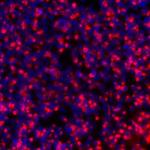
Michael Collins, MD
Senior Investigator
Skeletal Disorders & Mineral Homeostasis Section
NIDCR
Research Topics
The mission of the Skeletal Disorders and Mineral Homeostasis Section is to advance the understanding of bone and mineral metabolism through clinical and translational studies of human diseases, and animal models and in vitro systems. The approach is primarily the study of rare diseases that serve as model systems. Clinical observations generate testable hypotheses that lead to basic and clinical studies that elucidate both pathophysiology and physiology and lead to the development of novel evidenced-based treatments. The principle disorders currently under investigation include: 1) fibrous dysplasia of bone/McCune-Albright syndrome (FD/MAS), a disease of the skeletal stem cell caused by activating mutations of the GNAS gene, that encodes the Gsα protein; 2) disorders of the phosphate- and vitamin D-regulating hormone, FGF23; and 3) hypoparathyroidism, a disease of parathyroid hormone (PTH) deficiency that allows for not only the study of the PTH/Gsα/cAMP pathway in bone and mineral metabolism, but also serves as a model in which to study FGF23 physiology.
Biography
Dr. Mike Collins did his endocrine training at the NIH in the Interinstitute Endocrine Training Program and his internal medicine residency training, chief residency, and medical school training at the University of Maryland in Baltimore. Dr. Collins has been at the NIH since completing his fellowship training. Areas of investigation include bone biology and mineral metabolism, which are studied through clinical and translational studies. Specific areas of interest include the role of PTH, G-proteins, and cAMP in bone cell biology, and FGF23 in mineral metabolism. The primary approach is the study and treatment of patients with rare disorders of bone and mineral metabolism as models through which to understand human bone and mineral biology and physiology. Current models of focus include fibrous dysplasia of bone, hypoparathyroidism, and disorders of FGF23 excess and deficiency.
Selected Publications
- Gafni RI, Collins MT. Hypoparathyroidism. N Engl J Med. 2019;380(18):1738-1747.
- de Castro LF, Burke AB, Wang HD, Tsai J, Florenzano P, Pan KS, Bhattacharyya N, Boyce AM, Gafni RI, Molinolo AA, Robey PG, Collins MT. Activation of RANK/RANKL/OPG Pathway Is Involved in the Pathophysiology of Fibrous Dysplasia and Associated With Disease Burden. J Bone Miner Res. 2019;34(2):290-294.
- Roberts MS, Gafni RI, Brillante B, Guthrie LC, Streit J, Gash D, Gelb J, Krusinska E, Brennan SC, Schepelmann M, Riccardi D, Bin Khayat ME, Ward DT, Nemeth EF, Rosskamp R, Collins MT. Treatment of Autosomal Dominant Hypocalcemia Type 1 With the Calcilytic NPSP795 (SHP635). J Bone Miner Res. 2019;34(9):1609-1618.
- Ramnitz MS, Gourh P, Goldbach-Mansky R, Wodajo F, Ichikawa S, Econs MJ, White KE, Molinolo A, Chen MY, Heller T, Del Rivero J, Seo-Mayer P, Arabshahi B, Jackson MB, Hatab S, McCarthy E, Guthrie LC, Brillante BA, Gafni RI, Collins MT. Phenotypic and Genotypic Characterization and Treatment of a Cohort With Familial Tumoral Calcinosis/Hyperostosis-Hyperphosphatemia Syndrome. J Bone Miner Res. 2016;31(10):1845-1854.
- Hartley IR, Miller CB, Papadakis GZ, Bergwitz C, Del Rivero J, Blau JE, Florenzano P, Berglund JA, Tassone J, Roszko KL, Moran S, Gafni RI, Isaacs R, Collins MT. Targeted FGFR Blockade for the Treatment of Tumor-Induced Osteomalacia. N Engl J Med. 2020;383(14):1387-1389.
Related Scientific Focus Areas
This page was last updated on Thursday, November 9, 2023


